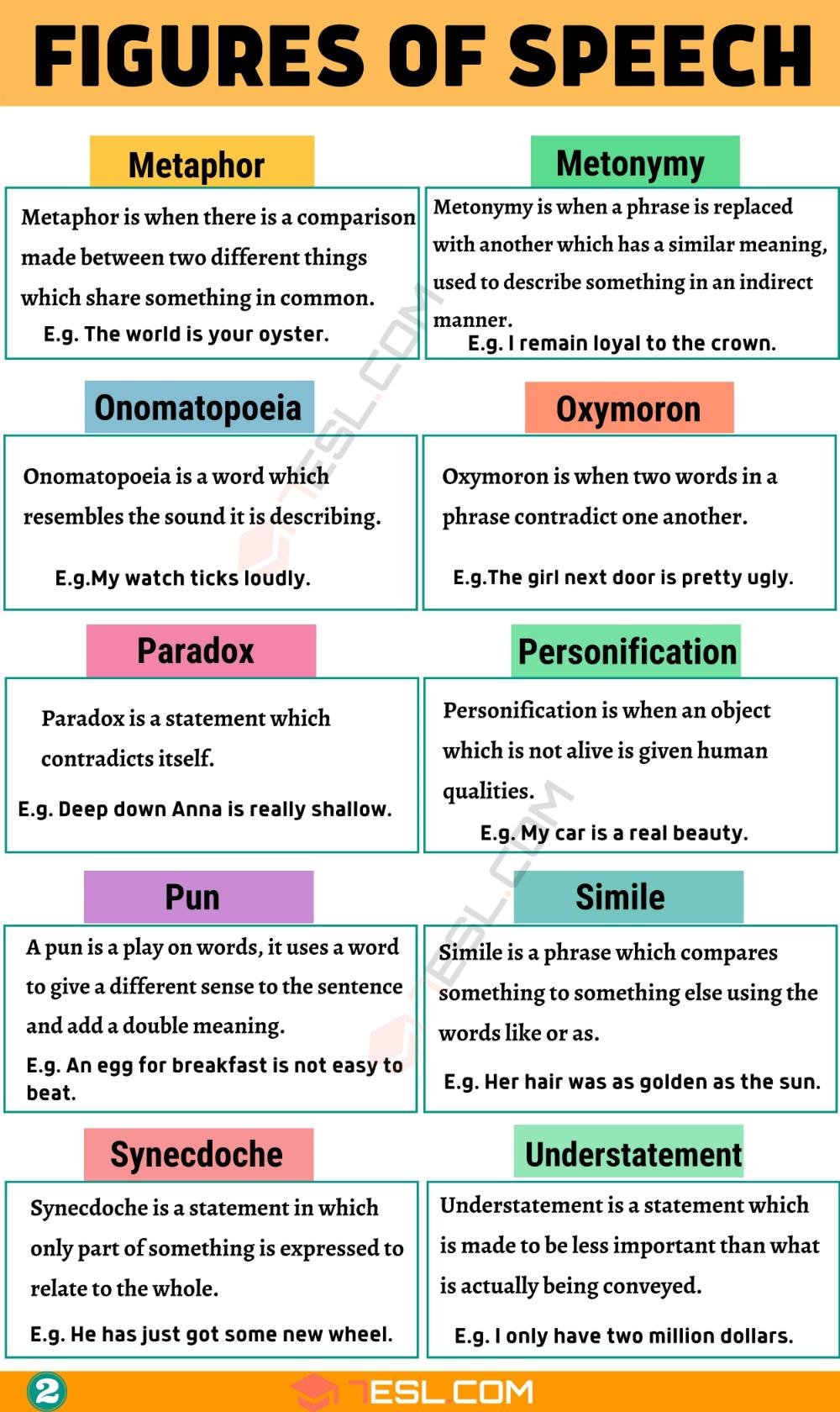literal language
what are figures of speech ? | language acquisition, linguistics, literal & figurative language
A figure of speech is a word or phrase that possesses another meaning from that generated by words, a separate meaning from its literal definition.
There are 2 types of language: literal (what words mean) and figurative (not the strict or real meaning of the words).
Figurative language is language that’s intended to create an image, association, or other effect in the mind of the listener or reader that goes beyond the mere meaning of words.
It can be a metaphor or simile designed to make a comparison. It can be the repetition of alliteration or the exaggeration of hyperbole to provide a dramatic effect.
About this lesson- The following Figures of Speech are covered in Part-1: 1. Simile 2. Metaphor 3. Personification 4. Apostrophe 5. Metonymy 6. Synecdoche 7. Onomatopoeia 8. Alliteration 9. Assonance 10. Pun
Part-2 covers the following Figures of Speech: Antithesis Chiasmus Paradox Irony Rhetorical Question Hyperbole Understatement Litotes Anaphora Epistrophe Climax Anti-climax

A figure of speech is used to make writing more interesting as it expresses something in another way than its literal meaning. Here are the 10 most common figures of speech in English.
Metaphor
A methaphor is a comparison between two different things, which share something in common. For example:
The world is your oyster.
Metonymy
This refers to a phrase that is replaced with another phrase with a similar meaning used to describe something in an indirect manner, such as:
I remain loyal to the crown.
Onomatopoeia
Onomatopoeia is a word that resembles the sound it describes, for example:
The clock ticks loudly.
Oxymoron
An oxymoron is when two words in the same sentence contradict one another, such as:
The girl next door is pretty ugly.
Paradox
A paradox is a statement that contradicts itself.
Deep down, Sophia is really shallow.
Simile
A phrase that compares something to something else using the words “like” or “as”.
Her hair was as golden as the sun.
Synecdoche
When only part of something is expressed to relate to the whole, it’s called a synecdoche.
He just got some new wheels.
Understatement
An understatement is a statement that is made to be less important than what is actually conveyed.
I only have four million dollars.
The difference between a dumb owl and a wise owl is that the former says “to who, to who” and latter says “to whom, to whom!”